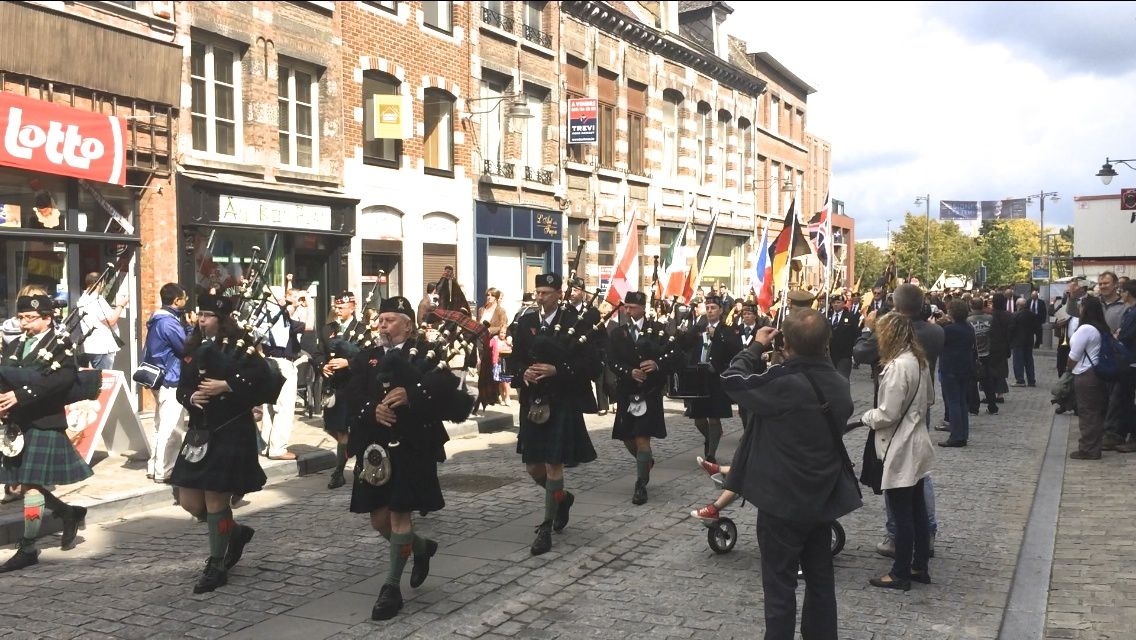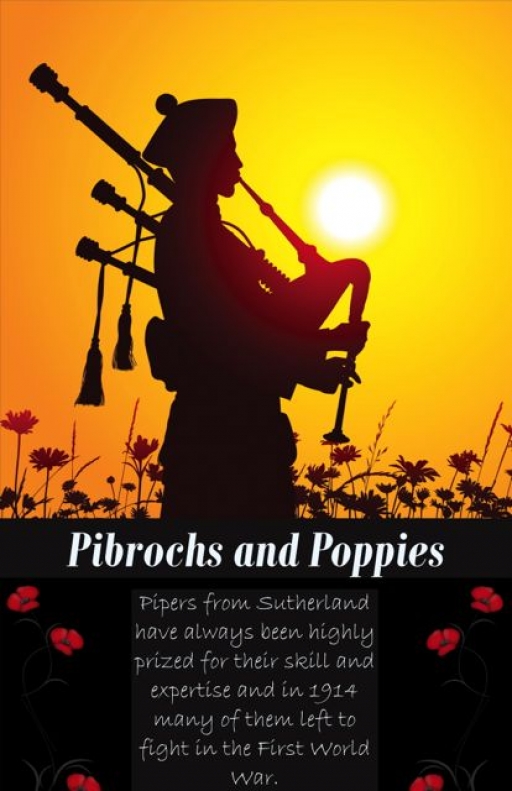Musicians and researchers in the north of Scotland are working together to explore the role of music, particularly the bagpipes, during the First World War.
It’s thought more than 2,500 pipers served on the Western Front alone, suffering heavy casualties.
Their legacy is the subject of ‘Pibrochs and Poppies,’ a joint venture between Strathnaver Museum, on Sutherland’s north coast, and Feis air an Oir (Festival on the Edge).
The researchers say they’ve already identified several tunes written by First World War pipers from the north of Scotland, and they’d like to hear from more people whose forebears played the pipes.
Pipers have long been associated with the military, and demand for them grew during 1914-18, not least to boost morale in the trenches.
 Bagpipes have been played at many Centenary events – as here at Mons in Belgium, August 2014 (Photo: Centenary News)
Bagpipes have been played at many Centenary events – as here at Mons in Belgium, August 2014 (Photo: Centenary News)
Tommy Mackay Chairman of Strathnaver Museum, said: “We will use music, particularly bagpipe music, to work with communities and in particular young people to explore the broad impact and legacy of WWI on families and communities within the north of Scotland and its continuing resonance on modern life.”
Sutherland became renowned for producing pipers of exceptional quality, the Museum explains.
During the early 19th century, those from Tongue in Strathnaver in particular, were said to have come ‘as if trained in a school’.
The Pibroch, or Piobaireachd (‘piping’ in Gaelic), is a genre of music primarily associated with the Scottish Highlands characterised by its extended compositions of a melodic theme and elaborate formal variations.
A new commemorative work will be composed as part of the ‘Pibroch and Poppies’ project.
Music workshops and training are being provided to help volunteers develop their heritage skills.
The information gathered will be digitally recorded and shared on a dedicated web-page.
To find out how to get involved, contact Fiona Mackenzie at Strathnaver Museum: fiona@strathnavermuseum.org.uk.
Source: Strathnaver Museum
Images: Strathnaver Museum; Peter Alhadeff, Centenary News (Mons)
Posted by: Peter Alhadeff, Centenary News
